PRAISE FOR TRUE VIRTUE
I met Sister Annabel Laity when she helped organize Thich Nhat Hanhs first teaching tour to the United Kingdom more than thirty years ago now. Since then we have practiced alongside each other and I have seen her transform from a shy young woman into a formidable teacher of the Dharma. Reading True Virtue has taught me so much about Sister Annabel and her qualities of faith, determination, and tenderness.
S ISTER C HAN K HONG , cofounder of Plum Village Community of Engaged Buddhism, France; director of the humanitarian projects of the International Plum Village Sangha since the 1960s; and author of Learning True Love
More than just a personal biography, this is a first-hand account of the early years of Plum Village and the unfolding of Thich Nhat Hanhs vision and the activities of the Order of Interbeing. Venerable Annabel recounts her early years as a monastic and her subsequent life helping Thay to realise his aspirations in spreading the cultivation of mindfulness and compassion in all directions throughout the world.
J ETSUNMA T ENZIN P ALMO , founder of Dongyu Gatsal Ling nunnery and author of Reflections on a Mountain Lake: Teachings on Practical Buddhism
Sister True Virtue was among the first three monastic disciples of Thich Nhat Hanh ordained more than thirty years ago. This honest and delightful book tells of her journey as a spiritual seeker, brave activist, and a lifetime practitioner. As the first Westerner to be ordained, her trailblazing spirit has allowed many monastic and lay practitioners alike to follow in her footsteps.
S ISTER C HAN D IEU N GHIEM , senior Dharma teacher in the lineage of Thich Nhat Hanh, former abbess of Plum Village Lower Hamlet
Sister Annabels poignant memoir is a powerful and much needed reminder of the strength to be found in cultivating stillness and mindful attention to the present moment. It is a moving testament to the courage and deep compassion of those who follow Zen Master Thich Nhat Hanhs path of Engaged Buddhism in the world.
C HRISTINE T OOMEY , Amnesty International award-winning journalist and author of In Search of Buddhas Daughters
Sister True Virtues memoir is a simple telling of a spiritual journey with many twists and turns. Beginning with her childhood in the English countryside, winding through the Indian Himalayas and many cultures, Sister True Virtue arrives home at Plum Village and her path to awakening slowly accelerates. Her candid remembrances of interbeing with Thich Nhat Hanh and his community are heartwarming, innocent, and evocative.
K ARMA L EKSHE T SOMO , PhD, cofounder of Sakyadhita International Association of Buddhist Women and editor of Buddhism through American Womens Eyes
I have always thought of Sr. Annabel as my elder sister in the Dharma and Sangha. Her presence and her erudite talks are an inspiration to everyone in the audience and if there are any doubts on understanding the sutras, Sr. Annabel is the person to seek out for clarity. She also has an Ananda-like memory and remembers what Thay taught and in what setting and reference. She cultivates the path of peace in oneself and peace in the world.
S HANTUM S ETH , D HARMACHARYA , Ahimsatrust.org, and pilgrimage teacher and guide, Buddhapath.com
The first virtue is the virtue of putting an end to the afflictions: letting go of anger, craving, fear, and delusion.
The second virtue is the virtue of loving: having the capacity to accept, forgive, and embrace the other person with compassion. The third virtue is the virtue of insight: the ability to look deeply and gain insight so you can resolve your difficulties and help other people.
T HICH N HAT H ANH
Contents
Preface
N OT LONG after I had been ordained as a nun, my teacher Thich Nhat Hanh would ask me to write about my life. He saw that I did not respond. I did try several times in notebooks to write about myself, but I never felt it was good enough. A friend offered to transcribe one of these notebooks and, in the end, these writings became the basis for what is in this book.
Thay (teacher, as we affectionately call Thich Nhat Hanh) always tells us that writing about our life is a meditation, a practice of looking deeply to know and understand ourself better. The various events of our life that we hold on to as memories can all be lessons helping us to develop the three virtues that exist as seeds in our consciousness: putting an end to the afflictions, loving, and insight.
Our self is always changing from moment to moment. It is not something we can grasp but is more like a river, which we can learn to understand in its different manifestations every day.
Looking back at yourself as a child, you might be tempted to ask: What does that child have to do with me? You could also ask the same question of yourself as you were one week ago. When you were a child you did not stop to try to understand yourself. You grew up without noticing that you were growing up until one day it was time to leave home.
When I was a child I used to look up at the stars outside my bedroom window and tell myself that I would never leave my home in the Cornish countryside. I could not imagine living anywhere else. But the day came when I was put on the train to go to London University and the farmhouse in Cornwall ceased to be home.
Still, that child in the photograph does have something to do with the seventy-year-old now. The joy, the sadness, and the roots of virtue have grown and changed, but if my childhood had not been like that, the present experience would not be like this. Writing a memoir is seeing connections between what is remembered as then and what is experienced as now.
Thay gave me the name True Virtue when I was ordained as a lay member of the Order of Interbeing and I kept the same name when I was ordained as a nun. Virtue is the translation of the Chinese  and the Sanskrit gua, the inner quality of virtue. On my ordination certificate my name was written in French Vraie Vertu. I was not impressed by the name and I tried to forget about it, but one day, while lying in his hammock in the Upper Hamlet, Thay told me that True Virtue was a good name. From that time I began to think about how I and the name could become one. I felt happy when I heard about the virtue of cutting off afflictions (
and the Sanskrit gua, the inner quality of virtue. On my ordination certificate my name was written in French Vraie Vertu. I was not impressed by the name and I tried to forget about it, but one day, while lying in his hammock in the Upper Hamlet, Thay told me that True Virtue was a good name. From that time I began to think about how I and the name could become one. I felt happy when I heard about the virtue of cutting off afflictions ( 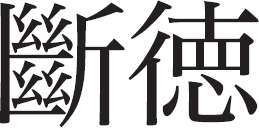 ). I felt that this was something I could do bit by bit.
). I felt that this was something I could do bit by bit.
Your teacher uses his or her intuitive insight to give you a name. It is for you to meditate on and use as a guide on your path of practice. In this book I can look into how true or how imperfect my practice of virtue has been.
Sister Annabel Laity
New Hamlet, Plum Village, France
July 2018

P ART O NE




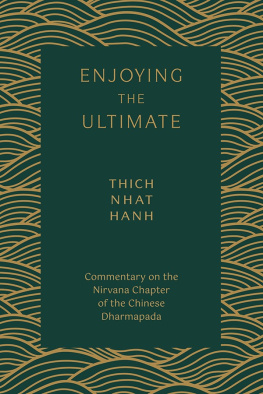
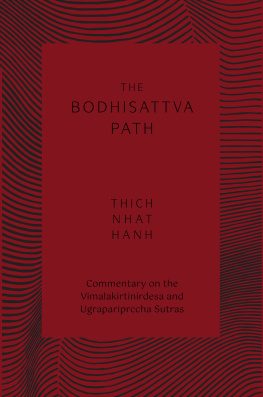
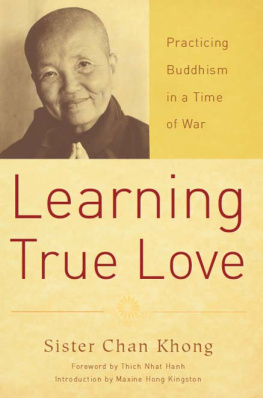
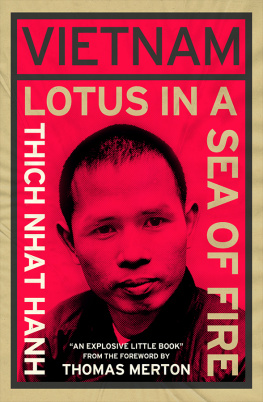
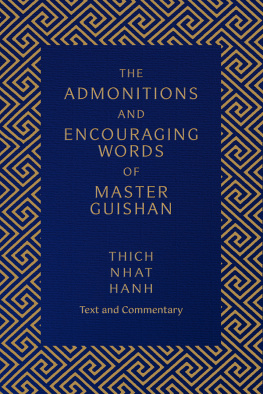
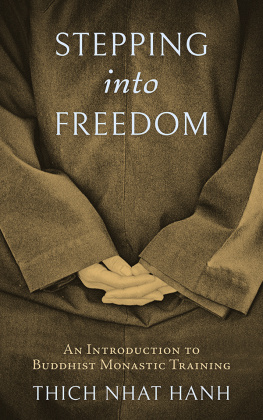

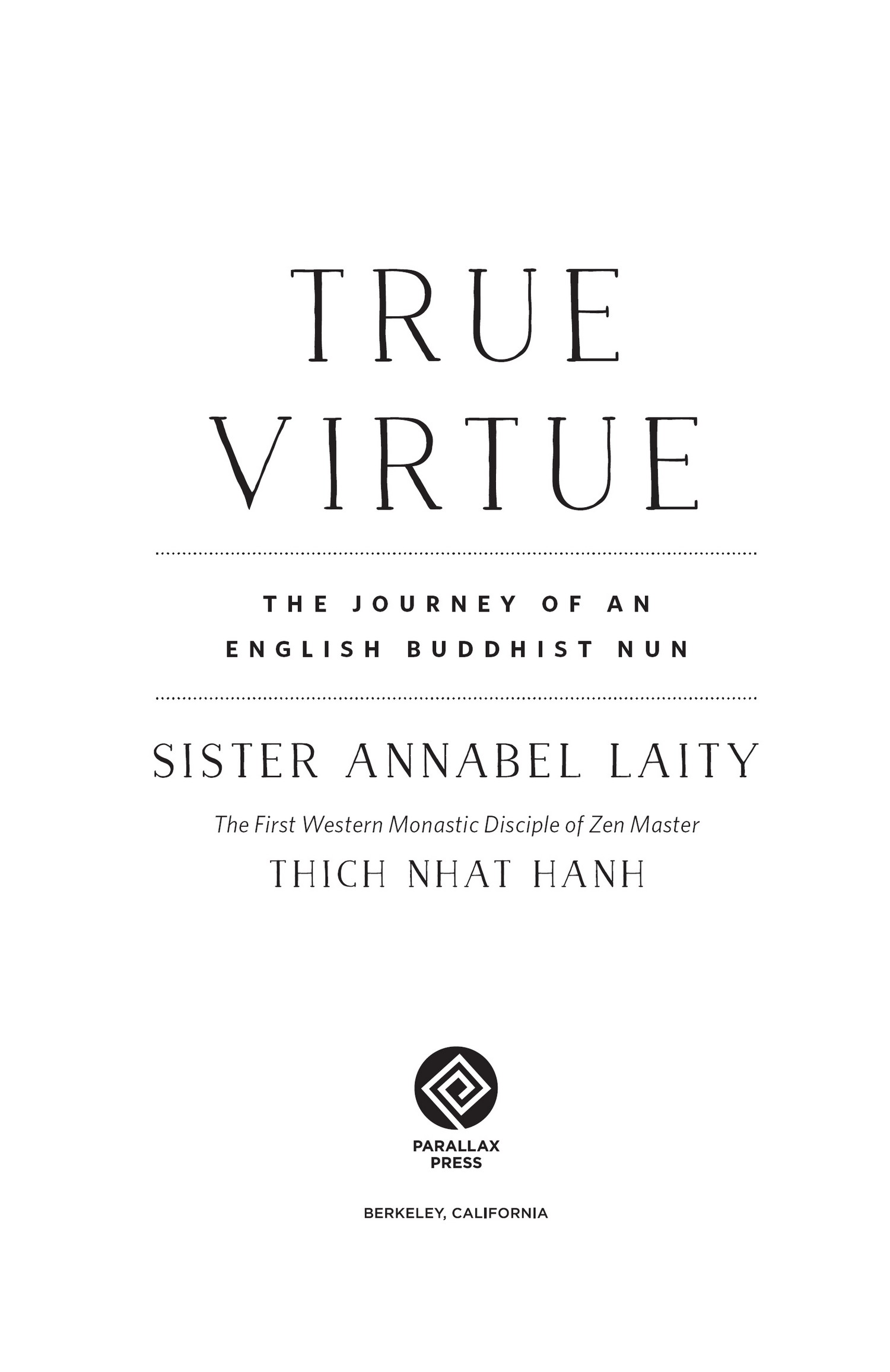
 and the Sanskrit gua, the inner quality of virtue. On my ordination certificate my name was written in French Vraie Vertu. I was not impressed by the name and I tried to forget about it, but one day, while lying in his hammock in the Upper Hamlet, Thay told me that True Virtue was a good name. From that time I began to think about how I and the name could become one. I felt happy when I heard about the virtue of cutting off afflictions (
and the Sanskrit gua, the inner quality of virtue. On my ordination certificate my name was written in French Vraie Vertu. I was not impressed by the name and I tried to forget about it, but one day, while lying in his hammock in the Upper Hamlet, Thay told me that True Virtue was a good name. From that time I began to think about how I and the name could become one. I felt happy when I heard about the virtue of cutting off afflictions (  ). I felt that this was something I could do bit by bit.
). I felt that this was something I could do bit by bit. P ART O NE
P ART O NE